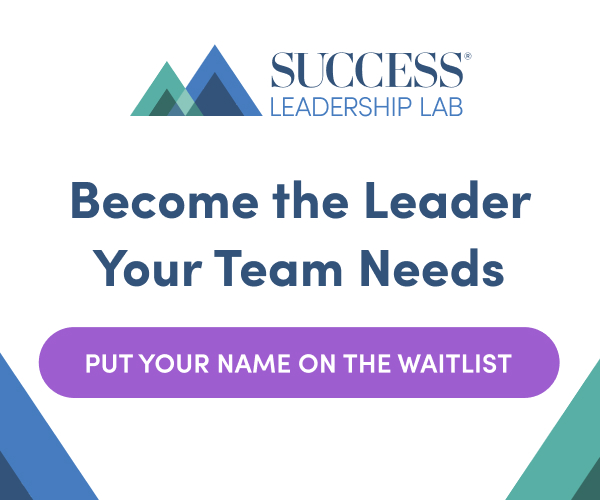Ask any business professional what they look for most in their career and they’ll likely have a similar answer: work-life balance. Both employees and employers often tout this as the ultimate goal of the corporate world. However, Jennifer Roberson, a Gallup-certified strengths coach and risk advisory and employee engagement manager at top-10 accounting firm CBIZ, argues for a different approach. Rather than strive toward that elusive work-life balance, Roberson advocates for a more integrated approach, which she calls BLEND.
“Forget work-life balance,” Roberson advises. “Find a place where you can work that allows you to blend and be your best at both work and life without it breaking you.” This philosophy stems from her journey as a full-time professional, mother, wife and active community member.
Work-life BLEND explained
Roberson’s BLEND concept is an acronym that encapsulates her holistic approach to integrating work and personal life:
B—Balance
Roberson challenges the traditional notion of work-life balance, comparing it to a scale with two plates trying to achieve perfect equilibrium. “There are times when life pulls a lot at me and times when career pulls a lot at me,” she explains. Instead of striving for constant balance, she advocates for accepting the natural ebb and flow between work and personal life demands.
L—Love
This part of BLEND emphasizes the importance of genuinely enjoying your work environment and colleagues. “Do you care deeply? Do you love where you work? Do you love the people you’re with?” Roberson asks. She believes that cultivating positive relationships and a supportive work culture makes it easier to blend your personal and professional lives.

E—Energy
Identify what gives you energy in your work. “Are you doing things on a day-to-day basis that bring you energy?” she asks. By understanding your strengths and gradually shifting your career toward tasks that energize you, you can create a more fulfilling work experience that positively impacts your personal life.
N—Needs
Align your passions with your organization’s needs, Roberson suggests. “Figure out what the needs of your organization are and then… drift in that direction.” By finding the sweet spot, you can create a role that serves both your personal interests and your company’s objectives.
D—Dedicate
Commit to long-term growth and expertise in your chosen area. “You need to be the subject-matter expert,” Roberson emphasizes. This dedication involves continuously learning, staying up to date on industry trends and positioning yourself as a leader in your field.
BLEND in practice
Roberson offers several practical strategies for implementing the BLEND concept into your life:
1. Choose the right culture
When job hunting, look beyond just the role and salary. You should also research the company’s culture through platforms like Glassdoor and LinkedIn. Ask deep questions about the work environment and team dynamics during the interview.
2. Focus on team dynamics
Roberson points out that “culture is felt at a team level.” Even in organizations with strong overall cultures, individual team experiences vary dramatically. Ensure that your immediate team aligns with your values and work style.
3. Identify your strengths
Use tools like Gallup’s CliftonStrengths or Marcus Buckingham’s StandOut Assessment to understand your natural talents. “I wish that I did it so much earlier in my career,” Roberson shares.
4. Reflect on your best days
Regularly assess which tasks and experiences energize you at work. After you have a good day, Roberson suggests asking yourself, “What was it that was really great?”
5. Advocate for yourself
Don’t be afraid to express your interests and seek opportunities that align with your strengths. “Every conversation that you have with a mentor or with a performance review or a manager—seek out where you want to be,” she adds.
6. Be intentional with opportunities
Just because a door opens doesn’t mean you have to walk through it. Evaluate new opportunities based on how well they align with your strengths and long-term goals.
The evolving landscape of work-life integration
The COVID-19 pandemic accelerated the relevance and importance of striking a work-life BLEND. With more people working from home, the lines between work and personal life have become increasingly blurred. Roberson notes, “I feel like this whole BLEND thing that I was talking about, you hear it all the time now.”
This shift has also heightened the importance of organizational culture. As geographical constraints on employment loosen, companies must work harder to create engaging, supportive environments to retain talent. Roberson’s role in employee engagement now includes initiatives like “Cultivate Connections” committees and virtual events to foster relationships among remote team members.
Beyond career: A holistic approach to well-being
Roberson emphasizes that true work-life BLEND extends beyond just career satisfaction. It also encompasses overall well-being, including physical health, financial stability, community engagement and social connections. “Instead of it just being so focused on ‘love what you do and build a career,’ the conversation in the corporate world has gotten broader to focus on the whole person,” she says.
This comprehensive approach to well-being benefits individuals and has a ripple effect on families, communities and, ultimately, the world. “If I can help individuals within an organization really love where they work—if we have great companies that treat people well—then the people that work there interact with their friends and their family and their kids, and those are better interactions,” Roberson says.
Roberson’s BLEND concept offers a fresh perspective on the age-old challenge of integrating work and personal life. By forgetting about perfect balance and, instead, reshifting the focus to create a harmonious blend, professionals can achieve greater satisfaction, energy and overall well-being. As the nature of work continues to evolve, embracing BLEND might be the key to navigating the complex interplay between our professional and personal lives.
This article appears in the November 2024 issue of SUCCESS+ Magazine. Photo courtesy of Drazen Zigic/Shutterstock










